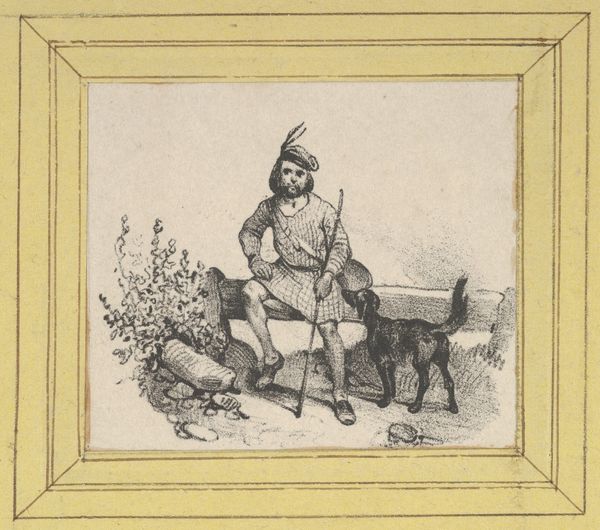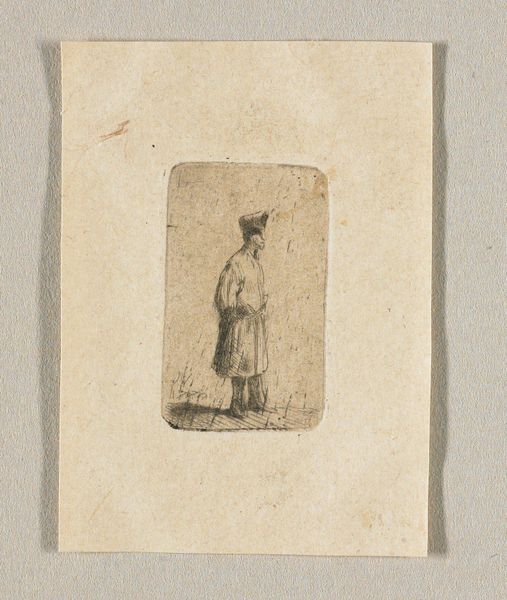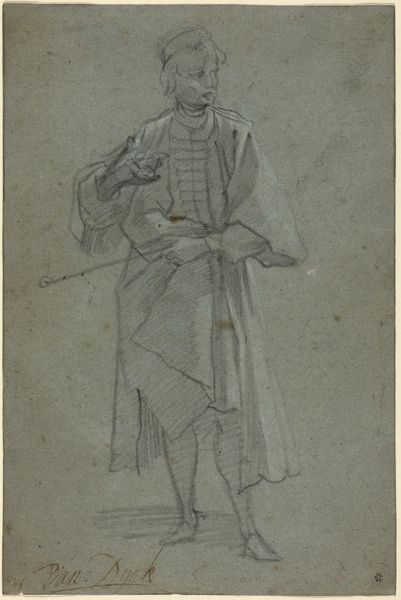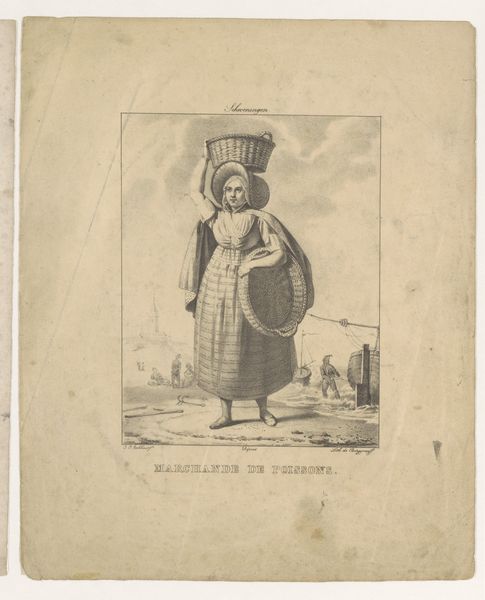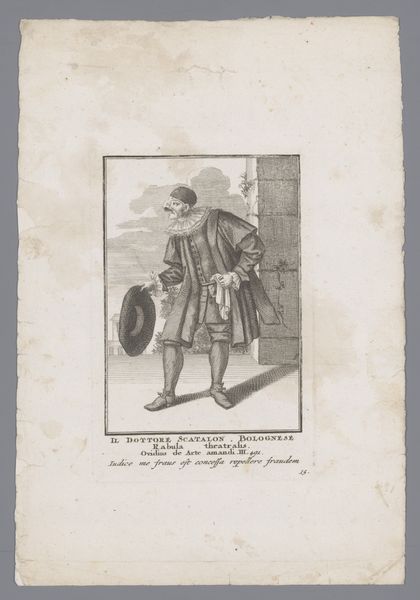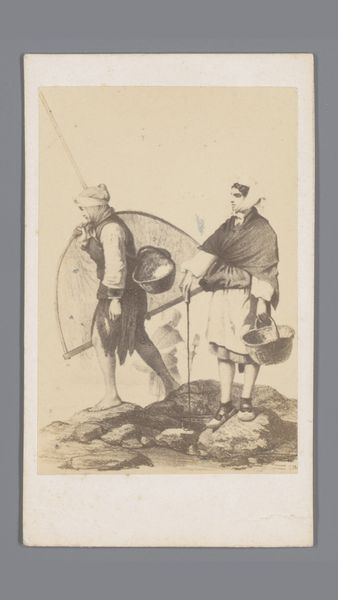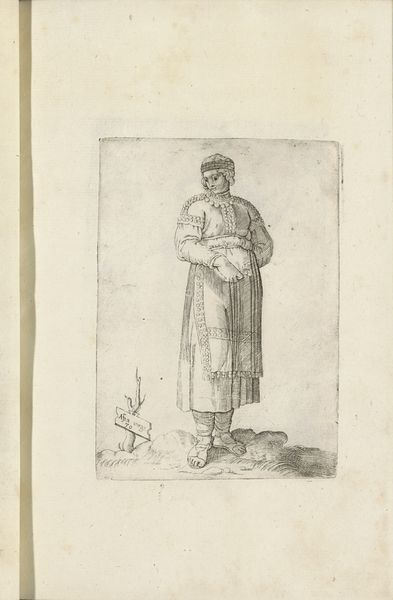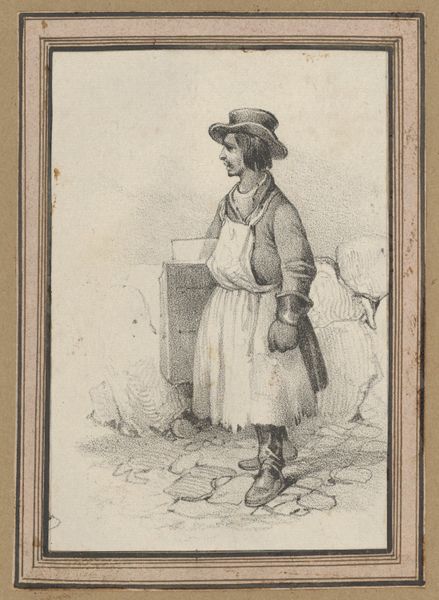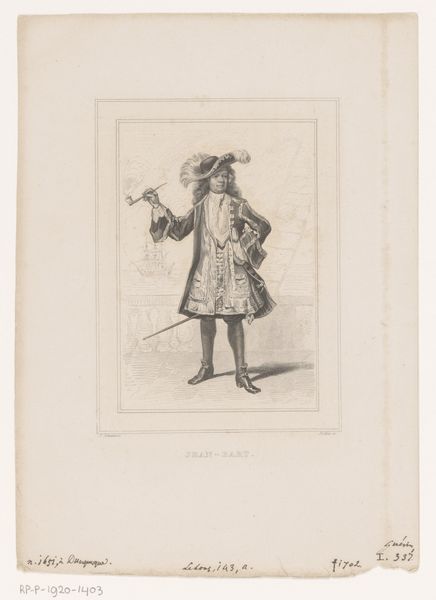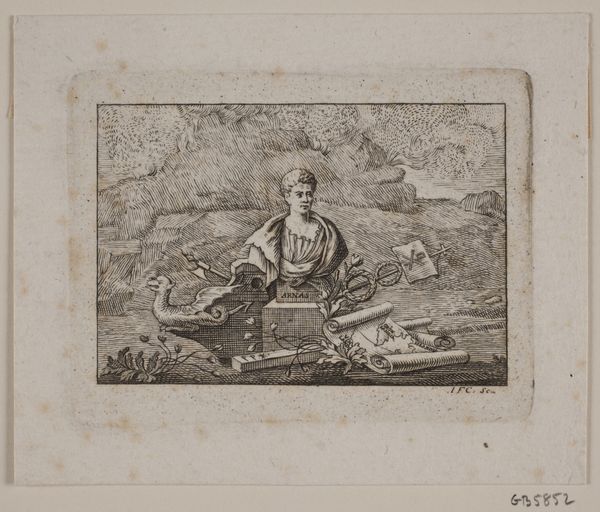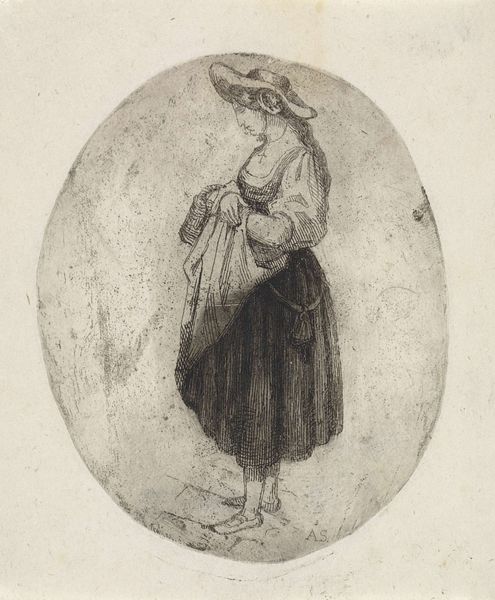
drawing, print, pencil
#
portrait
#
drawing
# print
#
coloured pencil
#
romanticism
#
pencil
Dimensions: Sheet (Circular): 1 15/16 × 1 15/16 in. (4.9 × 4.9 cm) Mount: 12 5/16 x 18 1/16 in. (31.3 x 45.9 cm)
Copyright: Public Domain
Curator: This pencil drawing, dating roughly from 1820 to 1866, is titled "Standing man, viewed from the back," created by Victor Adam. The work currently resides here at the Met. What are your initial impressions? Editor: Stark, somehow. He's isolated, seen from behind, suggesting a vulnerability or perhaps a journey, both physical and psychological. There's a sadness to his posture, like he is longing. Curator: Interesting. I'm immediately drawn to the details of his clothing and equipment. Look at the meticulously rendered bag and the way the pencil captures the texture of the fabric. The work presents Romantic themes through accessible production means, inviting considerations about craftsmanship, and who has time to make these small items to last. Editor: The bag stands out. It's a container, a vessel holding... what? Memories, experiences, burdens? He seems weighted down, or perhaps ready for what comes next, as if in a silent preparation, a ritual? Curator: That relates to the practical aspects too. We consider the portability of the work; it’s small, framed by what looks to be colored pencil or a thin print, likely able to travel easily. The constraints of artistic creation during that time – what tools were at hand, what scale of work was most practical – it informs the artwork fundamentally. Editor: It speaks of humanity, in transit perhaps, or seeking meaning. Look at the vague backdrop too; it almost feels symbolic, less about a specific place than the suggestion of a larger world that he’s facing alone. Curator: Precisely. And notice the slight variations in pencil strokes, how that adds texture to the clothing but haziness to the background to imply shadow. Adam carefully chose accessible tools to invoke emotive results, making it Romantic not in just aesthetic or symbolism, but even his work process too. Editor: Seeing how all those details, both grand and mundane, add up, has changed my reading of the drawing significantly. I’d felt melancholy initially, but now I see it infused with purpose. Curator: I agree; thinking about its manufacture has given me a richer view of the work too, far beyond what just an emotional approach would grant. It also speaks about what visual rhetoric the public might have at its access through such economical imagery.
Comments
No comments
Be the first to comment and join the conversation on the ultimate creative platform.
